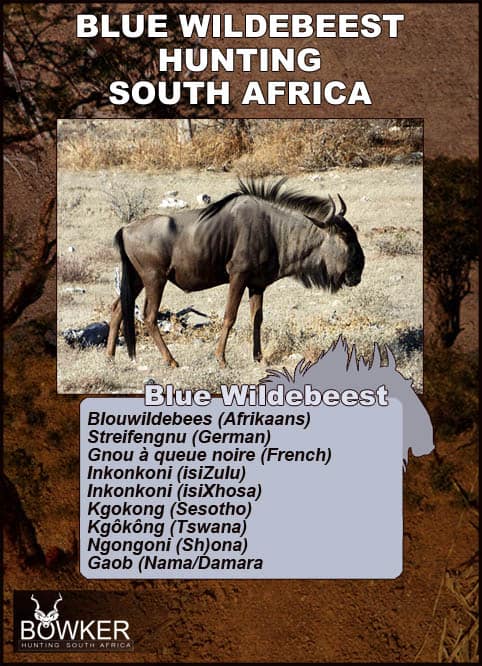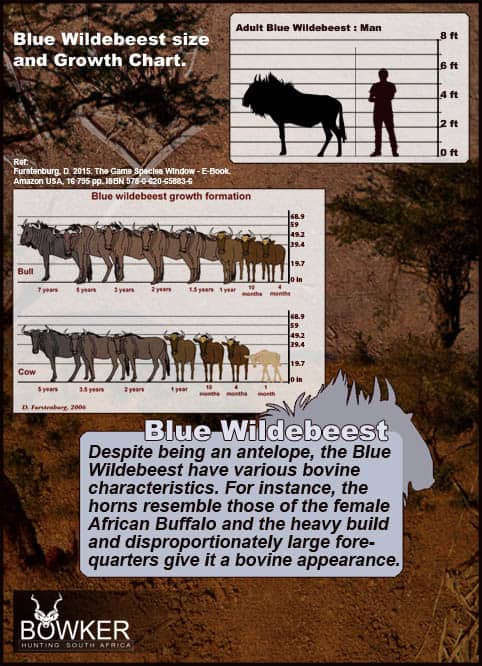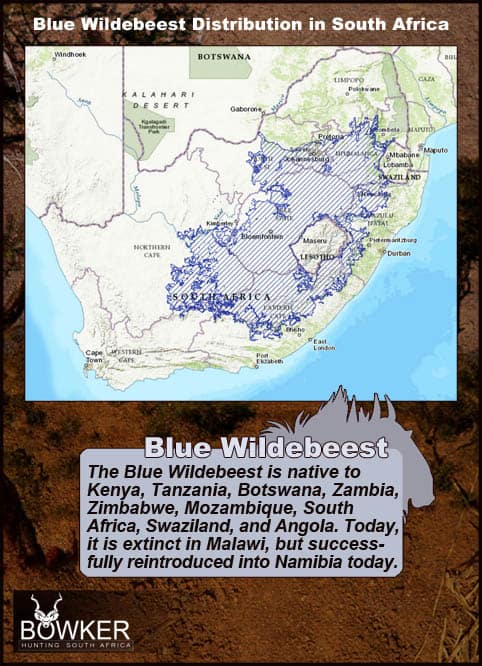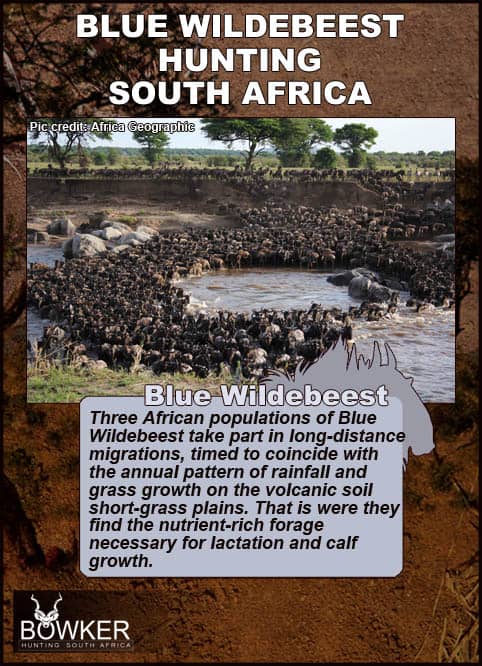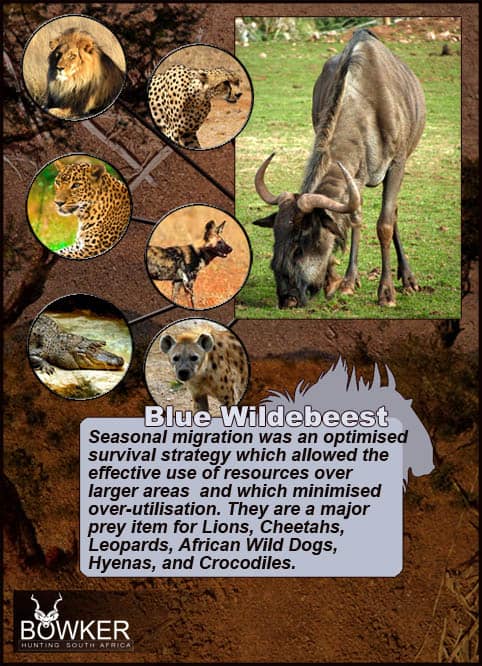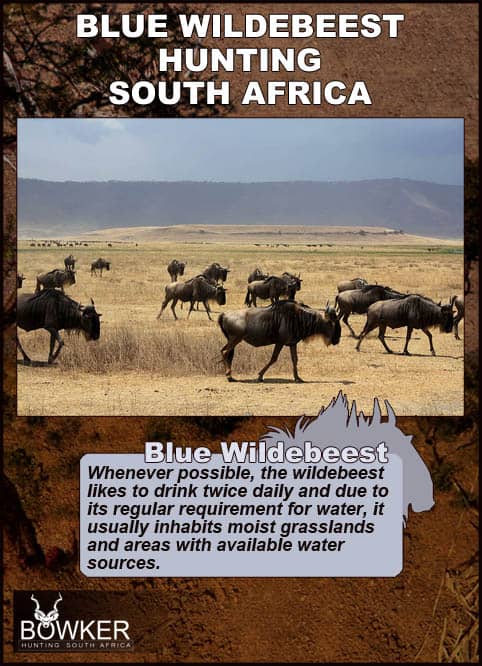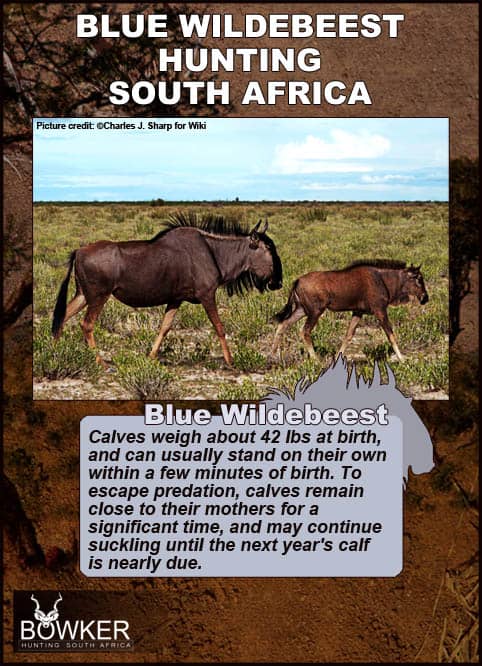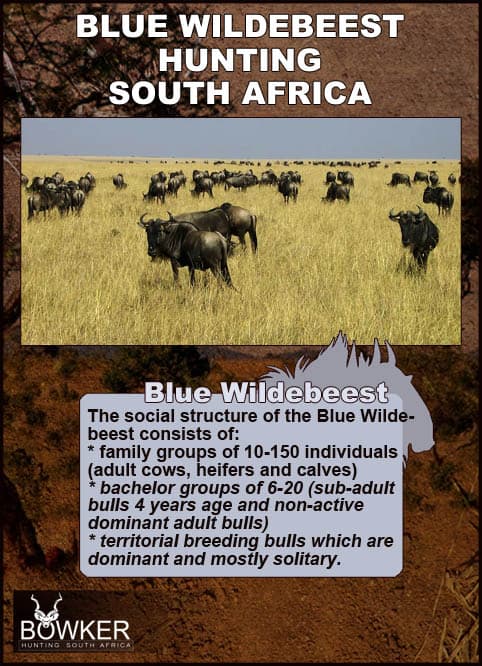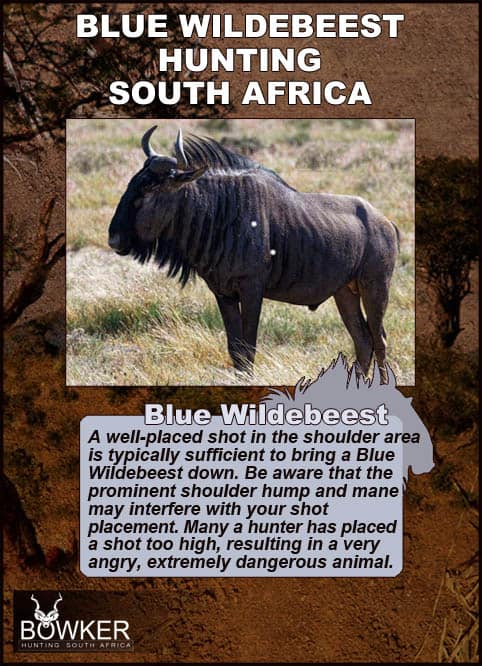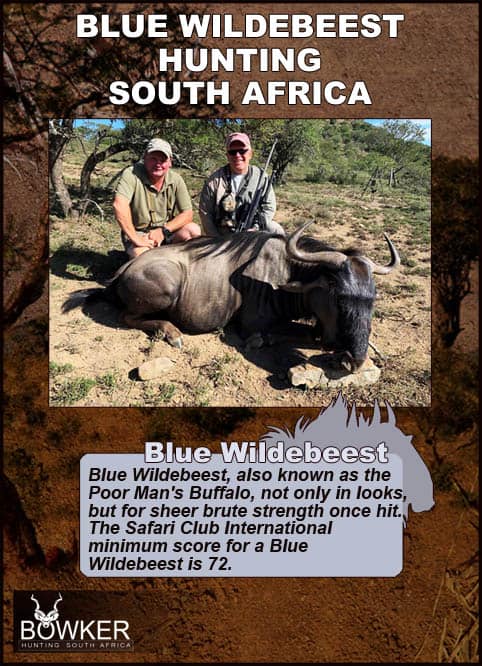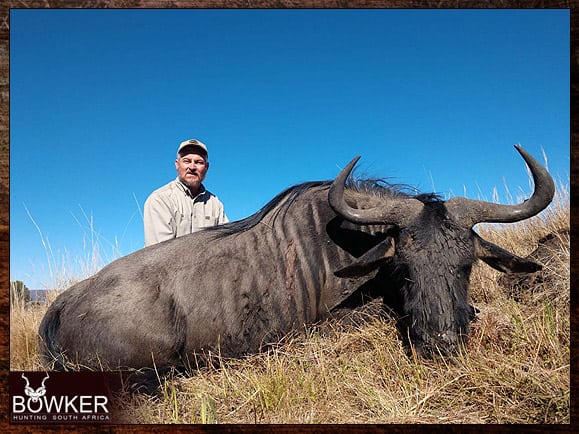
Summary
Blue Wildebeest hunting – also known as the Poor Man’s Cape Buffalo – not only in looks but for sheer brute strength once hit.
These animals have been known to travel up to 300 yards with a well-placed heart shot.
There are no seasonal restrictions on Wildebeest hunts in the Eastern Cape, South Africa.
Nick Bowker Hunting offers Blue Wildebeest and Black Wildebeest Africa hunts year-round.
Hunting Wildebeest is a popular local pastime due to their delicious meat.
Join us at our hunt lodge for an Africa hunt of a lifetime.
We have extensive free-range hunting areas for African safaris.
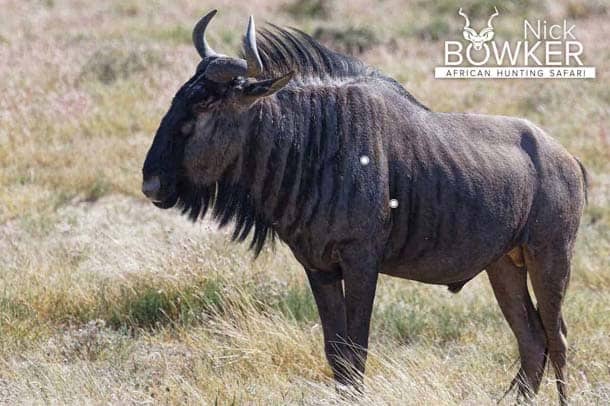
Table of Contents
Blue Wildebeest Trophy Fees in South Africa -2025
The average price of a blue wildebeest is around $1800. Wildebeest are included in big game hunting Africa price lists and can be added to any package hunt.
Our Blue Wildebeest price for 2025 is $1800.
Wildebeest trophy fees include a licensed hunting guide, a hunting license, and all permits—Hunt Wildebeest in the plains and savanna.
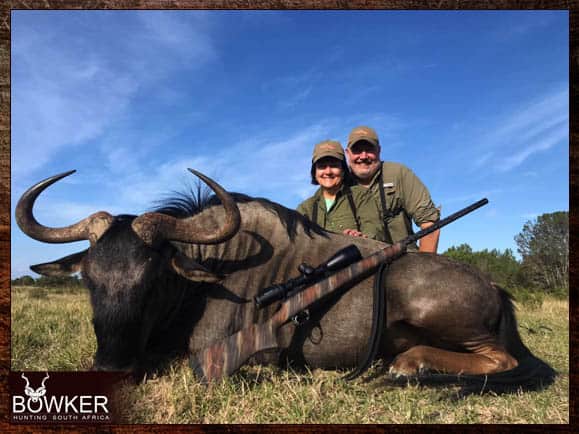
Hunting Blue Wildebeest in South Africa

Shot placement must be in the bottom third of the animal directly above the front shoulder. This will ensure a heart or lung shot. Avoid head and neck shots, which are high-risk for hunting Blue Wildebeest.
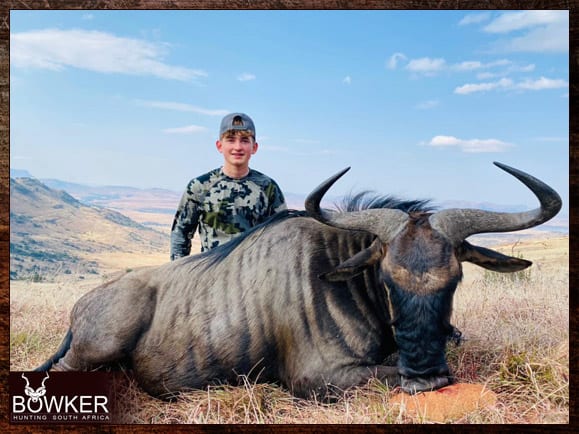
Your blue Wildebeest trophy should have an average shoulder height of around 58 inches, weigh about 350 pounds, and have a Horn length of approximately 25 – 27 inches.
The Safari Club International minimum score for a blue wildebeest is 70.
Trophies are measured by measuring the length along the outside of the horn curl from tip to tip, plus both bosses’ circumferences for a combined total score in inches.
Hunting Wildebeest, also referred to as the poor man’s buffalo – not only in looks but for sheer brute strength once hit. These animals can travel up to 200 yards with a well-placed heart shot.
Golden Wildebeest, a color phase, can also be hunted.
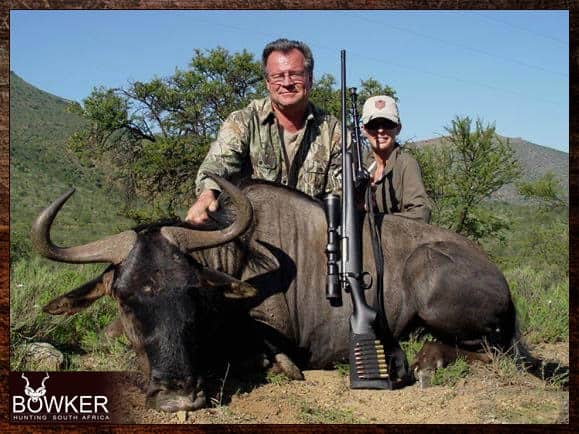
When hunting wildebeests, always try to position yourself for the side-on shot; aim up the back edge of the front leg and place the shot about four inches above the point of the elbow.
This ‘high heart’ shot will take heart and lungs; the animal will rock to the shot and probably go down within 50 yards.
Hunt Wildebeests by spot and stalk methods. Wildebeest hunting is often in thick wooded and savanna areas and plains.
If your shot placement is not entirely on the mark, hunters should be very cautious in your follow-up.
This animal can be hazardous when wounded. Hunters should approach a downed wildebeest from the ‘offside with great care, as he can get up and charge.
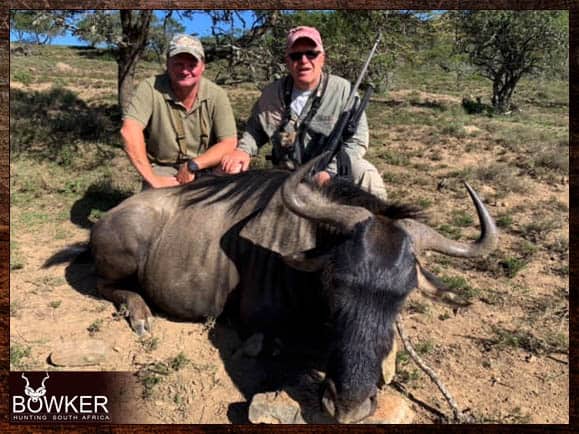
Trophy Judgement and Rifle Caliber for Wildebeest Hunts
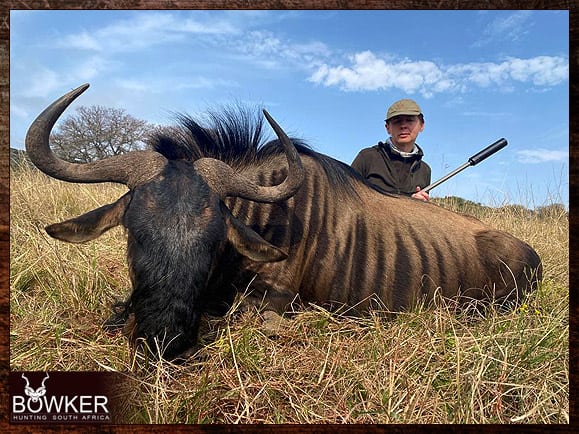
A very tough antelope. The prominent hump on the shoulder and the mane may often lead to shots placed too high during Wildebeest hunts.
Hunt Wildebeest with the flat shooting .300 magnums and a 200-grain bullet in our open country.
For those hunters who wish to avoid going through the red tape of bringing a rifle into Africa, Nick Bowker has 300 Winchester Magnums fitted with suppressors.
The rifles are mounted with Swarovski tactical scopes. We have hand-loaded Hornady ELD- X 200-grain ammunition.
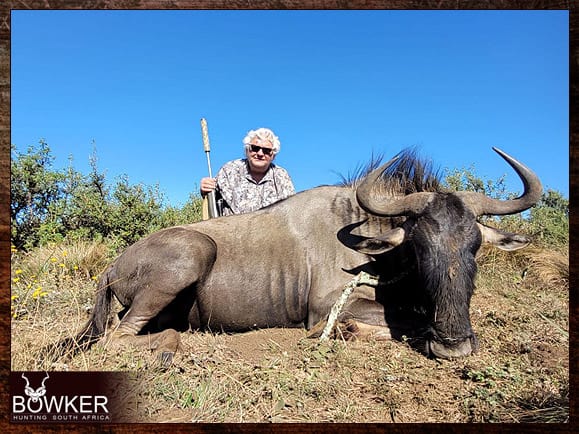
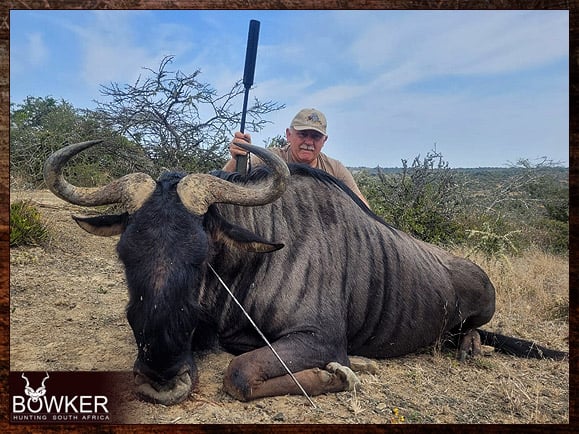
This setup, including ammunition, is available as part of all hunting packages free of charge, as well as a PH, accommodation, and trophy fees for hunters.
It is vital to look at the size and hardness of the boss to assess the trophy quality of a wildebeest. Also, the curl of the horn must be beyond the tip of the ears.
Mature gnu bulls display black or darkened hair between their bosses and on the front part of their heads, not red or brown hair, a sign of immaturity.
A trophy Blue should be on any hunter’s Africa hunts list.

The Difference Between a Male and a Female Wildebeest Antelope
The male blue has heavier horns and, when mature, a blackface. In contrast, females and sub-adults have a brownish color just below the base of the horns. Besides, mature bulls will be heavier than females.
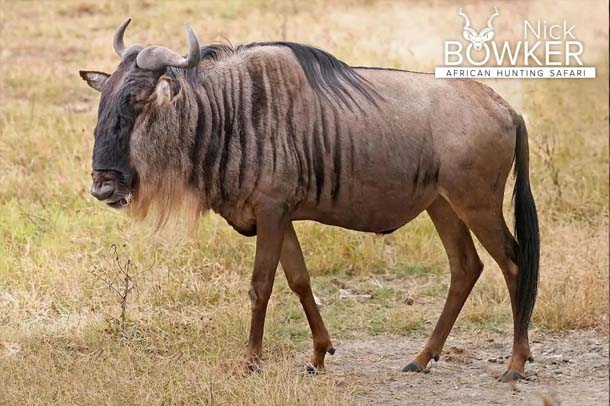
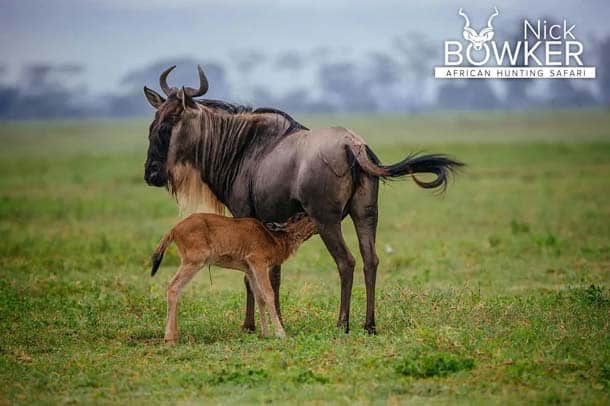
Interesting Facts for Your Wildebeest Hunt
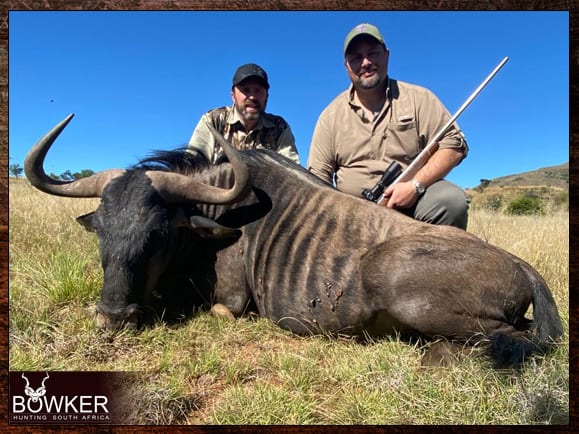
- Wildebeest got its name from their coat, which has a blue sheen.
- There are around 1.5 million living in the Serengeti alone! They are widespread in many areas of Africa.
- Their primary defense from predators is living in a group. Wildebeest stick together and move in herds to be safer.
- This species can run up to 40 mph, which is pretty fast! Although unfortunately for them, they are not as fast as lions or cheetahs.
- They migrate to Kenya and Tanzania as many as 1000 miles each year, which is a distance that would take around 20 hours to drive.
- They have a dangerous migratory route; during their migration, they cross two rivers – both of which are crocodile-infested.
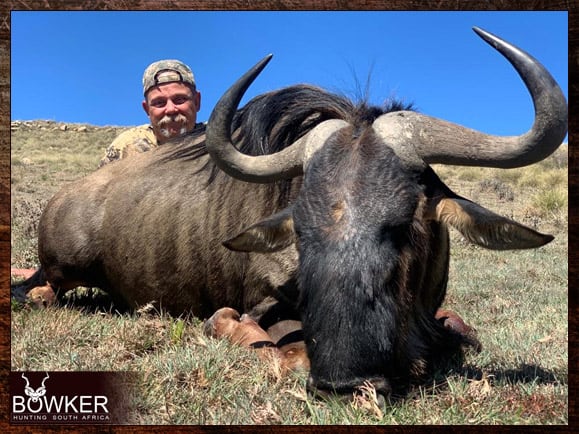
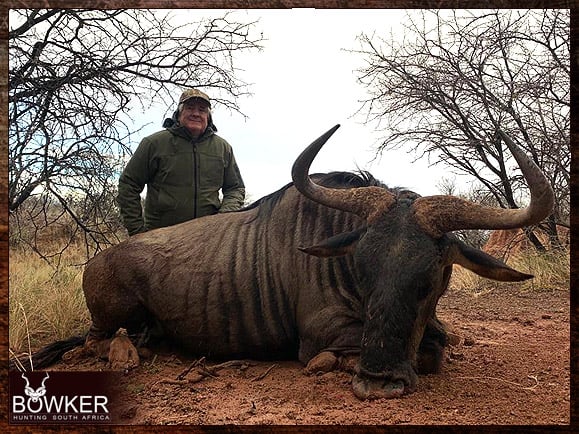
- Wildebeest or gnu as a species spend, on average, 53% of their time resting (32% lying down and 21% standing on the plains).
- It is often called the brindled gnu because of its coloration, with dark bands over its shoulders and flanks that give it a distinctive brindled appearance.
- The Gnu term refers to the sound it makes a “Gnuuu”.
- They also have pedal glands in between their toes, which are used by raking the ground (sometimes forming bare patches of soil), after which the scent is transferred to the earth, thus marking its territory.
- The Blue Wildebeest’s cousin, the Black Wildebeest, was once nearly extinct.
- Hunting Wildebeest – can be added to our African hunts packages.
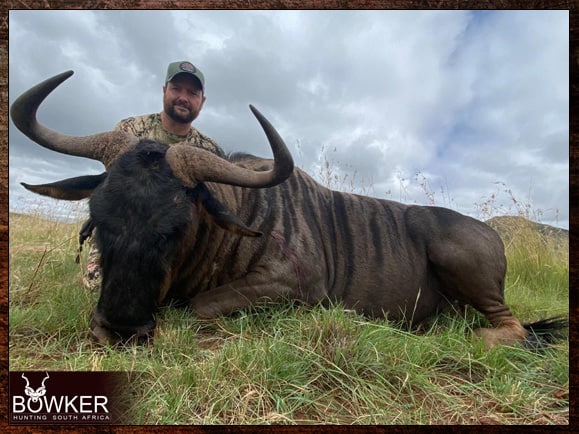
About the Wildebeest and Hunting
Information for wildebeest hunting

The wildebeest is primarily active during the morning and late afternoon, with the day’s hottest hours spent in rest.
These extremely agile and wary animal species can run up to 40 mph, waving their tails and tossing their heads.
They usually rest close to the herd and move about in loose aggregations.
Males form bachelor herds, distinguished from juvenile groups by the lower activity and the spacing between the animals.
Around 90% of the male calves join the bachelor herds before the next mating season and become territorial at four or five years.
Mature male wildebeest will actively defend and mark their territory utilizing scent markings.
With specially modified glands under the eye called preorbital glands, they will rub against trees, leaving a scent, thus marking his territory.
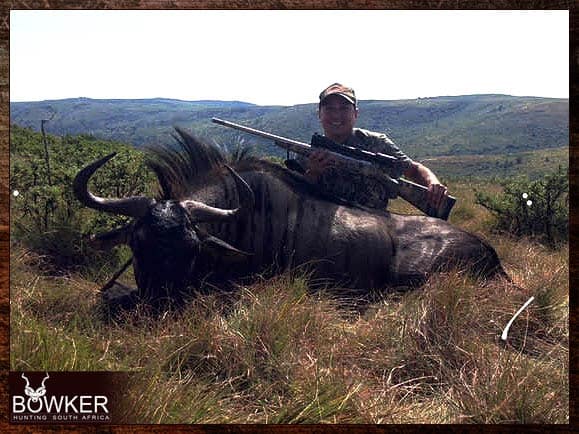
Description of wildebeest for hunting
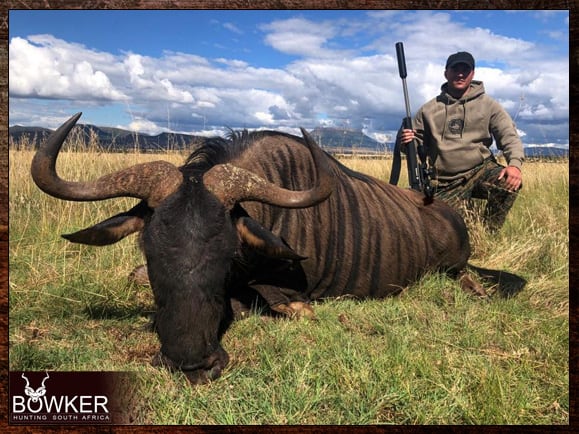
A robust muscular appearance. The face, mane, and tail are black with a bluish appearance dark vertical stripes on the neck and flanks.
The wildebeest male antelope is more extensive and darker than females. The average height of the species is about 45 – 60 inches.
While males weigh up to 400 pounds, females seldom exceed 300 pounds.
Both sexes possess a pair of large horns shaped like parentheses.
These extend outward to the side and then curve upward and inward. In males, the horns can be 30 inches long.
Despite being an antelope, the wildebeest game species has some bovine characteristics. For example, the horns resemble those of the female African buffalo.
Further, the stocky build and disproportionately large forequarters give it a bovine appearance.
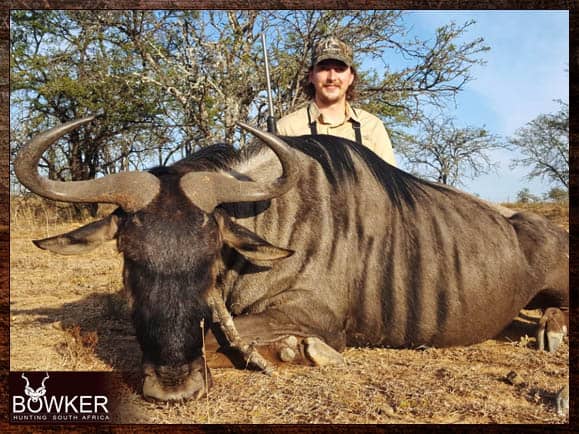
Hunt Wildebeest – Frequently Asked Questions
How much does it cost to hunt a Blue Wildebeest?
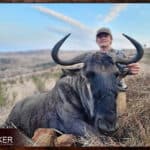
The trophy fee as a standalone Wildebeest hunt is between $800 to $1300. Daily rates vary between $250 to $500 a day.
Included in the Wildebeest trophy fees is a licensed guide. As well as a hunting license and all permits.
How to hunt Blue Wildebeest?
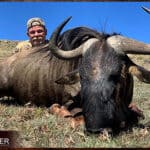
Wildebeest is hunted on the open plains. The Wildebeest is wary and difficult to approach. Longer shots will therefore be required.
Wildebeest bunch together. Shooting the right one will need careful communication with your professional hunter.
Where do you shoot a Blue Wildebeest?
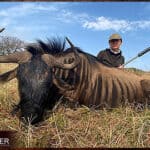
Placement must be in the bottom third of the animal directly above the front shoulder. This will ensure a heart or lung shot. Avoid head and neck shots, which are high-risk.
What is a trophy, Blue Wildebeest?
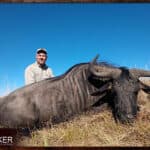
Blue Wildebeest trophies have a Horn Length of approximately 25 – 27 inches. The minimum qualification score under Safari Club International for a Wildebeest is 70.
Trophies are measured by measuring the length along the outside of the horn curl from tip to tip, plus both bosses’ circumferences for a combined total score in inches.
How do you judge a Blue Wildebeest trophy?
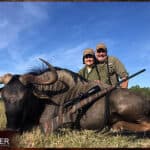
It is vital to look at the size and hardness of the boss to assess the trophy quality of a blue wildebeest. Also, the curl of the horn must be beyond the tip of the ears.
Mature bulls display black or darkened hair between their bosses and on the front part of their heads and not red or brown hair, a sign of immaturity.
Seasonal Restrictions
When can you hunt Blue Wildebeest in South Africa?
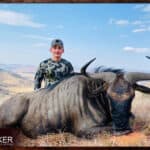
There are no seasonal restrictions on Wildebeest hunts in the Eastern Cape of South Africa for most outfitters.
What Caliber is Recommended for Blue Wildebeest Hunts?
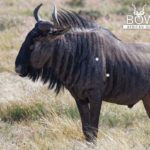
We recommend the flat shooting 300 Winchester or 7mm magnums with high-quality tactical scopes and a suppressor for Wildebeest hunts.
Blue Wildebeest in Pictures
Peruse our info graphic pictures presented below.
